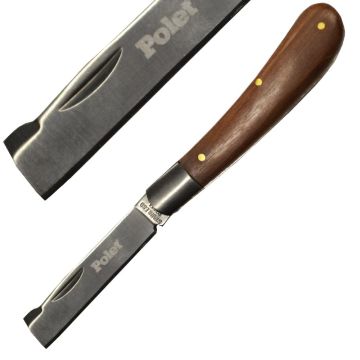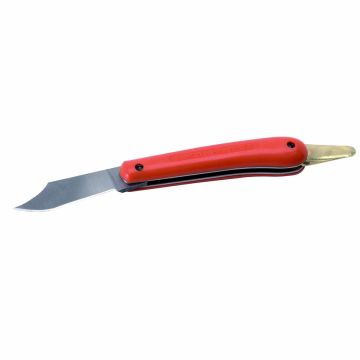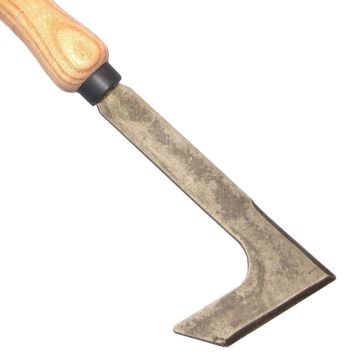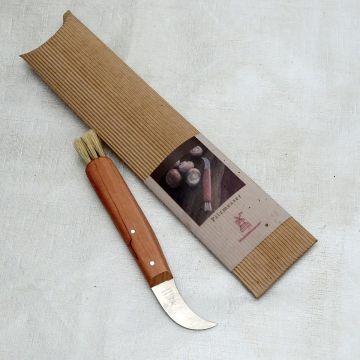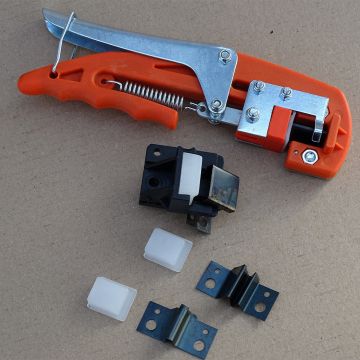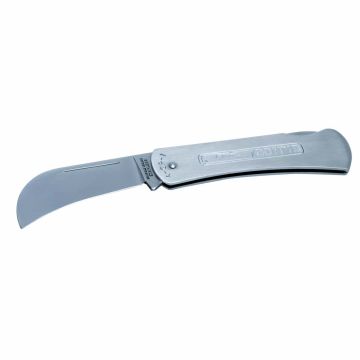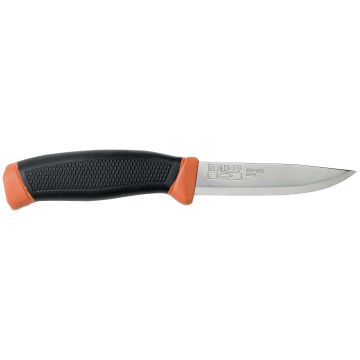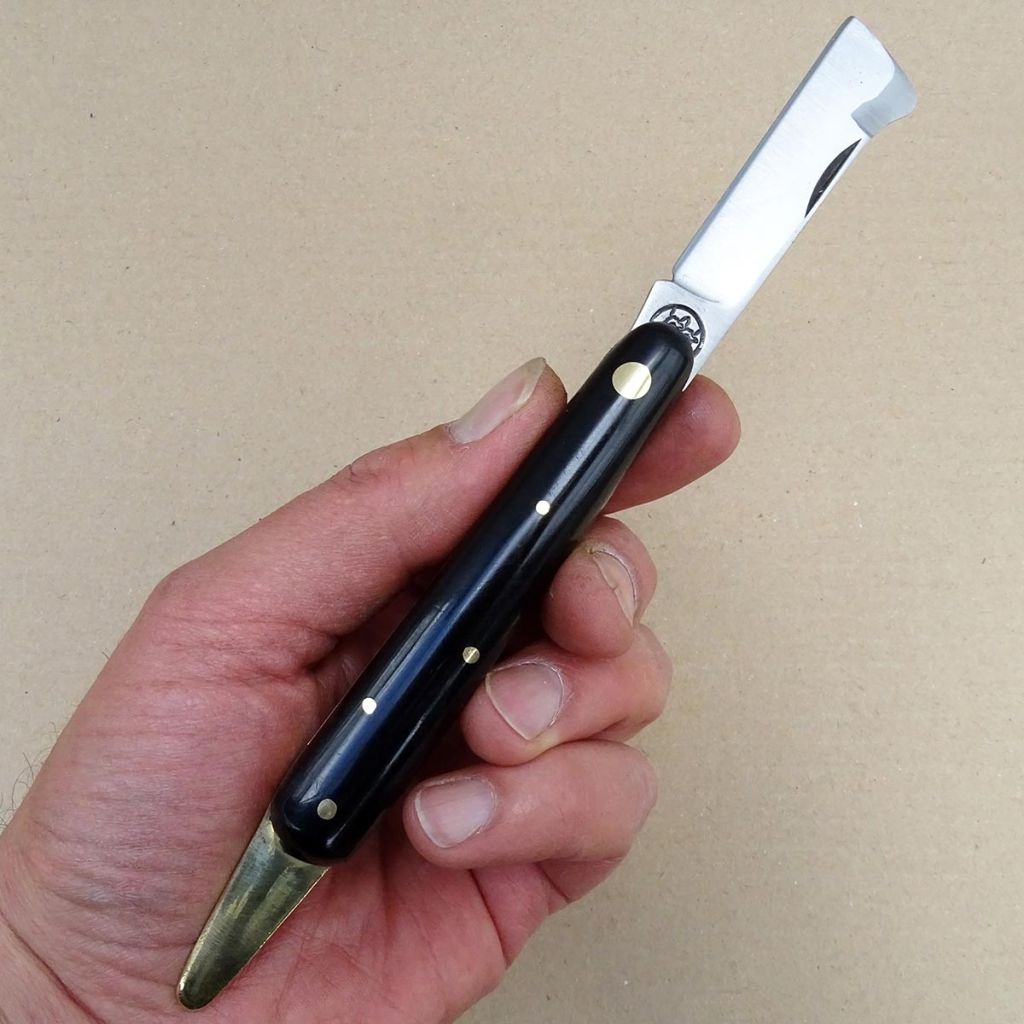

Grafting Tool for Vines
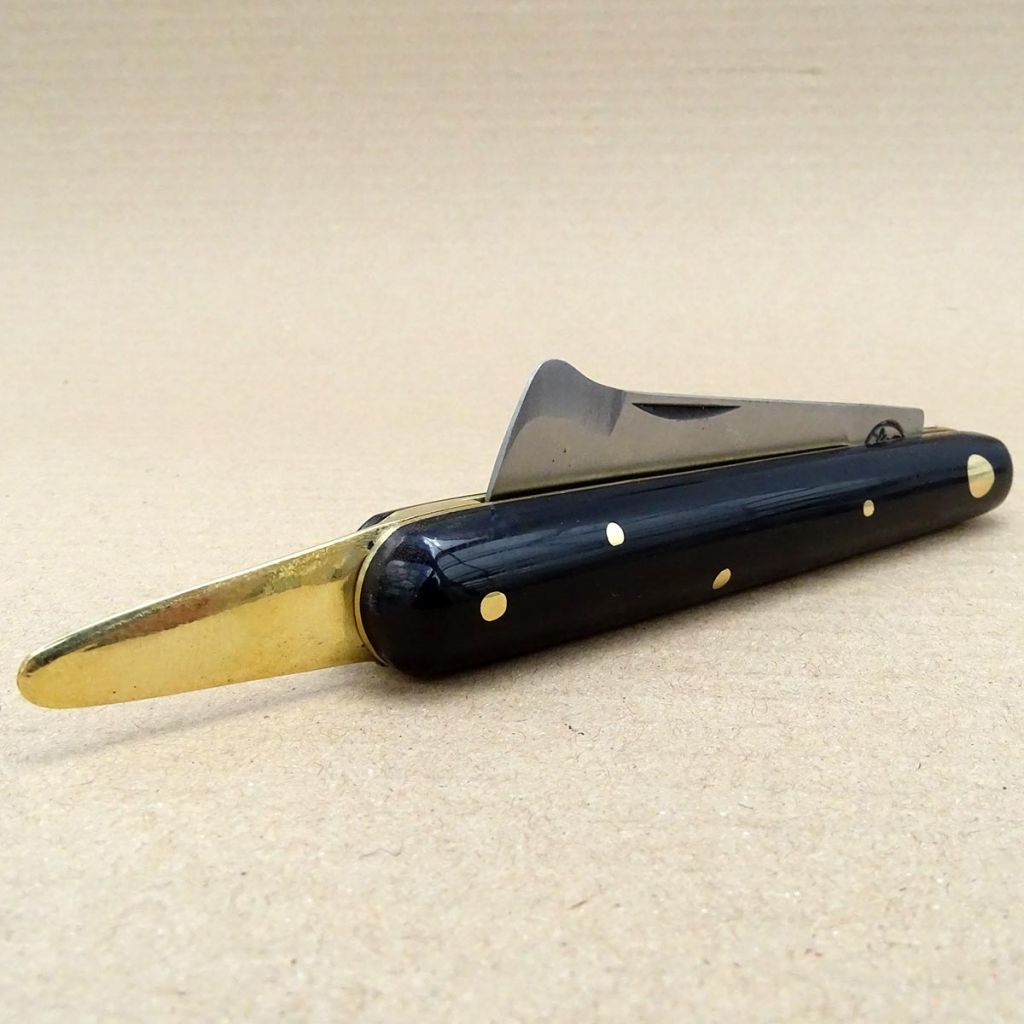

Grafting Tool for Vines
Grafting Tool for Vines
We guarantee the quality of our plants for a full growing cycle, and will replace at our expense any plant that fails to recover under normal climatic and planting conditions.
From €5.90 for pickup delivery and €6.90 for home delivery
Express home delivery from €8.90.
The vine-plant grafting knife is a straight grafting knife with a 5cm (2in) steel blade set in an ebonite handle. The spatula end is used to perform budding grafts, one of the most commonly used grafting techniques as it is fairly simple and causes less damage to the plant. This knife is ideal for V grafting on vines. The technique may seem complicated, but with a little practice and some good advice, you can achieve a successful vine graft!
Dimensions:
- Head = 5mm
- Total length = 105mm (4in)
This vine-plant grafting knife is a small handheld tool with an extremely sharp, pointed, and fairly short steel blade for easy handling, along with a spatula on the opposite edge. It is used to graft plants, which is perfect for obtaining plants identical to the original one while taking advantage of the chosen rootstock's qualities. This practice is reserved for experienced gardeners and professionals as it requires good technical skills, but with this knife and some advice, you can achieve beautiful grafts. This knife in particular is mainly used for V grafting on vines, which allows you to graft a variety onto a rootstock, usually a dead or declining plant, to give it new life and sometimes a new grape variety.
The first piece of advice is to wear gloves, as grafting in general requires precise and quick movements with a very sharp tool.
V or split grafting can be done during the dormant phase in late February to early March, when the risk of sudden cooling is lower. A prolonged slowdown in sap flow can lead to graft failure.
In cooler regions, herbaceous grafting is preferred. This is done between late June and August. The scion should have 1 or 2 buds and 1 petiole, and be moistened. The graft is then enclosed in a plastic bag and shaded.
- Trim the rootstock a few centimetres above the ground
- Take grafts from healthy woody climbing stems with 2 or 3 buds
- Trim the grafts at an angle on both sides
- Split the wood of the rootstock in the middle with a pruning knife, then insert a wedge or directly insert 1 or 2 grafts at the edge of the split (double graft) to align the cambium layers
If you are unsure about aligning them correctly, tilt the scion slightly in relation to the rootstock.
- Tie the 2 parts together with grafting elastic or moistened raffia
- Mound soil completely over the vine, protecting and confining the graft point. Firmly pack the soil
If it is a high graft, replace mounding with an upside-down plastic bottle with the bottom cut off. Hold it at the neck with a sleeve of turf or moss placed around the rootstock and fill it with moist sand.
- Water the mound if the soil retains moisture poorly
After a few weeks, the first shoots emerge from the mound. Wait a few more weeks, then flatten the mound so that the scion does not produce roots and becomes independent from the rootstock.
Technical features
Tips
Other Knives and grafting knives
This item has not been reviewed yet - be the first to leave a review about it.
Haven't found what you were looking for?
Hardiness is the lowest winter temperature a plant can endure without suffering serious damage or even dying. However, hardiness is affected by location (a sheltered area, such as a patio), protection (winter cover) and soil type (hardiness is improved by well-drained soil).

Photo Sharing Terms & Conditions
In order to encourage gardeners to interact and share their experiences, Promesse de fleurs offers various media enabling content to be uploaded onto its Site - in particular via the ‘Photo sharing’ module.
The User agrees to refrain from:
- Posting any content that is illegal, prejudicial, insulting, racist, inciteful to hatred, revisionist, contrary to public decency, that infringes on privacy or on the privacy rights of third parties, in particular the publicity rights of persons and goods, intellectual property rights, or the right to privacy.
- Submitting content on behalf of a third party;
- Impersonate the identity of a third party and/or publish any personal information about a third party;
In general, the User undertakes to refrain from any unethical behaviour.
All Content (in particular text, comments, files, images, photos, videos, creative works, etc.), which may be subject to property or intellectual property rights, image or other private rights, shall remain the property of the User, subject to the limited rights granted by the terms of the licence granted by Promesse de fleurs as stated below. Users are at liberty to publish or not to publish such Content on the Site, notably via the ‘Photo Sharing’ facility, and accept that this Content shall be made public and freely accessible, notably on the Internet.
Users further acknowledge, undertake to have ,and guarantee that they hold all necessary rights and permissions to publish such material on the Site, in particular with regard to the legislation in force pertaining to any privacy, property, intellectual property, image, or contractual rights, or rights of any other nature. By publishing such Content on the Site, Users acknowledge accepting full liability as publishers of the Content within the meaning of the law, and grant Promesse de fleurs, free of charge, an inclusive, worldwide licence for the said Content for the entire duration of its publication, including all reproduction, representation, up/downloading, displaying, performing, transmission, and storage rights.
Users also grant permission for their name to be linked to the Content and accept that this link may not always be made available.
By engaging in posting material, Users consent to their Content becoming automatically accessible on the Internet, in particular on other sites and/or blogs and/or web pages of the Promesse de fleurs site, including in particular social pages and the Promesse de fleurs catalogue.
Users may secure the removal of entrusted content free of charge by issuing a simple request via our contact form.
The flowering period indicated on our website applies to countries and regions located in USDA zone 8 (France, the United Kingdom, Ireland, the Netherlands, etc.)
It will vary according to where you live:
- In zones 9 to 10 (Italy, Spain, Greece, etc.), flowering will occur about 2 to 4 weeks earlier.
- In zones 6 to 7 (Germany, Poland, Slovenia, and lower mountainous regions), flowering will be delayed by 2 to 3 weeks.
- In zone 5 (Central Europe, Scandinavia), blooming will be delayed by 3 to 5 weeks.
In temperate climates, pruning of spring-flowering shrubs (forsythia, spireas, etc.) should be done just after flowering.
Pruning of summer-flowering shrubs (Indian Lilac, Perovskia, etc.) can be done in winter or spring.
In cold regions as well as with frost-sensitive plants, avoid pruning too early when severe frosts may still occur.
The planting period indicated on our website applies to countries and regions located in USDA zone 8 (France, United Kingdom, Ireland, Netherlands).
It will vary according to where you live:
- In Mediterranean zones (Marseille, Madrid, Milan, etc.), autumn and winter are the best planting periods.
- In continental zones (Strasbourg, Munich, Vienna, etc.), delay planting by 2 to 3 weeks in spring and bring it forward by 2 to 4 weeks in autumn.
- In mountainous regions (the Alps, Pyrenees, Carpathians, etc.), it is best to plant in late spring (May-June) or late summer (August-September).
The harvesting period indicated on our website applies to countries and regions in USDA zone 8 (France, England, Ireland, the Netherlands).
In colder areas (Scandinavia, Poland, Austria...) fruit and vegetable harvests are likely to be delayed by 3-4 weeks.
In warmer areas (Italy, Spain, Greece, etc.), harvesting will probably take place earlier, depending on weather conditions.
The sowing periods indicated on our website apply to countries and regions within USDA Zone 8 (France, UK, Ireland, Netherlands).
In colder areas (Scandinavia, Poland, Austria...), delay any outdoor sowing by 3-4 weeks, or sow under glass.
In warmer climes (Italy, Spain, Greece, etc.), bring outdoor sowing forward by a few weeks.

































